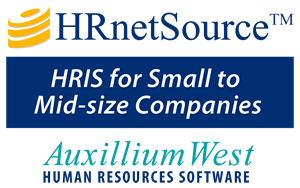Workers Compensation
Purpose of Process (see below how HRSource™ can help):
Provide an outline for providing a workers compensation program.
Recommended Steps in the Process:
- Workers Compensation insurance is required for most companies.
Coverage can be obtained from carriers specializing in this type
of insurance.
- The best form of insurance against workers compensation claims
is a safe workplace. A formal safety program is a wise choice in
addition to the insurance coverage. Most insurance carriers can
provide assistance in establishing a safety program. The state
of California requires a written Injury
and Illness Prevention Plan (IIPP) for employers with more
than 10 employees.
- Understanding the true cost of workers compensation insurance
is complicated. Utilize the Controller in selecting a carrier
and the alternative ways of funding this coverage.
- Once selected, notify employees by posting on the company
bulletin boards who the carrier is. In the state of California,
place this information on the Work Injury Notice poster (see Posting Requirements
process).
- Identify a local medical clinic that specializes in handling
workers compensation cases. Ensure that they will sufficiently
represent the company interests. Ask for and check references
from other client companies of the clinic. After finalizing the
arrangement with the clinic, inform managers and employees that
this is the clinic to be used for treatment of workers
compensation injuries or illnesses.
- Instruct employees and supervisors to report work-related
injuries to the designated company representative immediately.
Contact your workers compensation carrier to obtain
informational brochures which you can make available for
employees and distribute to new hires.
- The company must pay the employee for the time that they
receive medical treatment, up to the earlier of:
- The time the employee is released to return to work, or
- The end of the employee's shift
For subsequent days of absence caused by the work-related injury or illness, allow the employee to use sick or vacation pay. During the time the employee receives workers compensation payments, it is common to allow the employee to coordinate the use of sick or vacation pay, such that the combination of sick or vacation pay and workers compensation payments equals the employees regular wages prior to the injury or illness.
- When an employee reports an accident, provide details of the
insurance and a claim form (both available from the carrier) to
the injured worker and notify the carrier. The employee will
complete the claim form and submit it to you. You must sign and
date it, and submit it to the carrier. Carriers should describe
the notification process to you and supply necessary forms.
- If the injury requires time away from work, send the injured
employee an informational summary letter
and attach a benefits summary provided by the insurance carrier.
- Conduct an investigation of the accident (or near accident)
immediately after its occurrence. Review the Accident
Cause Analysis Checklist.
- Secure the incident scene. Keep it unchanged to collect the facts using photographs, video, and measurements and notes.
- Keep detailed notes. Only record facts and not interpretation of the facts.
- Injured person(s) and witnesses should be interviewed
(separately and confidentially - see the process on Conducting Investigations) and
evidence examined to determine the following:
- Immediate cause
- Possible underlying causes
- Management responsibilities
- After all causes have been identified, implement appropriate corrective measures to prevent the accident from happening again.
- Summarize and record the results of the investigation.
- Complete and submit the Employer's Report (Form 301) to your insurance carrier. Typically the form must be submitted within 5 days of the injury.
- Each February, all work related accidents need to be posted on an approved OSHA Form 300 log.
Process Tips:
If an injured worker needs treatment it is to the Company's advantage to insist that they see an Industrial Injury Clinic predetermined by the Company rather than their own physician. This helps to provide better cost control and overall effectiveness of the program.
Also refer to the Workplace Safety and Health process.
Taking the following steps can help reduce Workers' Compensation Fraud:
- Thoroughly investigate any injury.
- Pave the way for a smooth and early return to work if possible. Employees who feel valued are less likely to abuse the system.
- Address employee concerns. Companies with safe workplaces have fewer job injuries and, as a result, fewer fraudulent claims.
- Educate employees about the benefits they're entitled to as well as the penalties for fraud.
- Make sure there are procedures and appropriate forms available for reporting accidents and filing claims.
HRSource™ can help administer Workers Compensation:
-
Track work related illnesses and injuries.
- Publish OSHA forms 300, 300A, and 301.
- Track workers compensation premium costs by job classification
and transmit that data to payroll via the HRSource™-to-payroll
interface.
